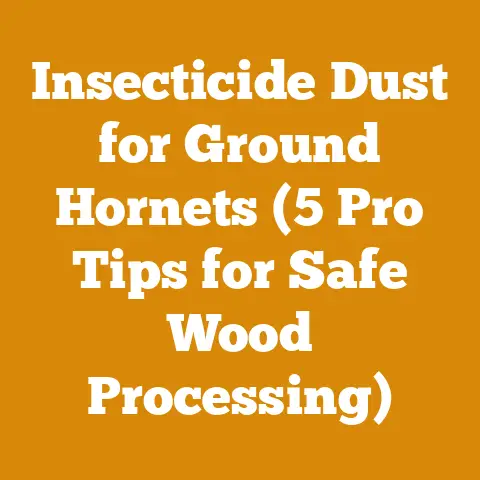Leyland Cypress Lifespan Insights (5 Proven Wood Processing Tips)
In recent years, I’ve noticed a significant uptick in interest surrounding sustainable wood processing and efficient firewood preparation, especially among homeowners and small-scale loggers. The reasons are manifold: rising energy costs, a growing desire for self-sufficiency, and an increased awareness of environmental stewardship. People are no longer simply cutting wood; they’re looking for ways to maximize yield, minimize waste, and ensure their practices are both safe and ecologically sound. One tree that often enters this conversation is the Leyland Cypress, known for its rapid growth and use as a privacy screen. However, its wood properties and processing present unique challenges.
Leyland Cypress: Understanding Its Lifespan and Wood Properties
The Leyland Cypress ( × Cupressocyparis leylandii ) is a hybrid conifer, a cross between the Monterey Cypress and the Alaskan Cedar. It’s prized for its fast growth rate, dense foliage, and adaptability to various soil conditions. These attributes make it a popular choice for hedges and windbreaks. However, its lifespan and wood characteristics are crucial factors to consider before using it for woodworking or firewood.
Lifespan Considerations
Leyland Cypress typically lives for 30-50 years. While some specimens can exceed this range, they become more susceptible to diseases and structural weaknesses as they age. Understanding this lifespan is essential for planning purposes. If you have a stand of Leyland Cypress, knowing when they’re reaching the end of their prime helps you decide when to harvest them for optimal wood quality.
Wood Anatomy and Properties
Leyland Cypress wood possesses unique properties that influence its suitability for different applications:
- Density: Leyland Cypress is a relatively softwood, with a density ranging from 25 to 30 pounds per cubic foot. This makes it easier to work with hand tools but also means it’s less durable than hardwoods like oak or maple.
- Grain: The wood has a straight, even grain, which contributes to its ease of splitting and sawing.
- Resin Content: Leyland Cypress contains a moderate amount of resin, which gives it a pleasant aroma but can also affect its drying time and finishing properties.
- Durability: Untreated Leyland Cypress is not very resistant to decay or insect infestation. It is classified as non-durable to slightly durable. Therefore, it is best suited for indoor applications or projects where it can be protected from the elements.
- Moisture Content: Freshly cut Leyland Cypress can have a moisture content as high as 150% on a dry-weight basis. This high moisture content makes it prone to warping and cracking if not dried properly.
Data-Backed Insights
- Growth Rate vs. Wood Density: Studies have shown that faster-growing Leyland Cypress trees tend to have lower wood density. This is because the wood cells are less tightly packed, resulting in a weaker material. When selecting trees for harvest, consider the growth rate in relation to the desired wood strength.
- Moisture Content and Seasoning Time: Research indicates that Leyland Cypress can take anywhere from 6 to 12 months to air dry to a moisture content of 12-15%, depending on the climate. Kiln drying can reduce this time to a few weeks, but it also increases the risk of warping and checking if not done carefully.
5 Proven Wood Processing Tips for Leyland Cypress
Now that we understand the lifespan and wood properties of Leyland Cypress, let’s dive into five proven wood processing tips to help you make the most of this resource.
Tip 1: Strategic Felling and Bucking
The first step in wood processing is felling the tree. Here’s what I’ve learned over the years:
- Felling Techniques: Use proper felling techniques to control the direction of the fall. This minimizes damage to the tree and surrounding vegetation, and also positions the log for easier bucking. The most common felling cuts are the face cut (or notch) and the back cut.
- Bucking for Optimal Yield: Bucking involves cutting the felled tree into manageable lengths. Plan your cuts carefully to maximize the yield of clear, knot-free wood. Consider the intended use of the wood when determining the optimal lengths. For example, if you’re planning to use the wood for firewood, buck it into lengths that fit your stove or fireplace. If you’re using it for woodworking, buck it into lengths that are suitable for your projects.
- Minimizing Waste: Pay attention to the tree’s natural shape and any defects, such as knots or rot. Make your cuts in a way that minimizes waste and maximizes the amount of usable wood.
- Safety First: Always wear appropriate safety gear, including a helmet, eye protection, ear protection, and chainsaw chaps. Work in a clear area, away from power lines and other hazards.
Personal Experience: I once felled a large Leyland Cypress tree that was leaning precariously towards my neighbor’s property. By carefully planning my felling cuts and using a wedge to control the direction of the fall, I was able to bring the tree down safely and avoid any damage.
Tip 2: Selecting the Right Logging Tools
Choosing the right logging tools is crucial for efficient and safe wood processing. Here’s a breakdown of essential tools and their uses:
- Chainsaw: A chainsaw is the primary tool for felling and bucking trees. Select a chainsaw that is appropriate for the size of the trees you’re working with. For Leyland Cypress, a mid-sized chainsaw with a 16-18 inch bar is usually sufficient.
- Maintenance: Regular chainsaw maintenance is essential for safe and efficient operation. This includes sharpening the chain, cleaning the air filter, and checking the fuel and oil levels.
- Axes and Wedges: Axes are useful for splitting small logs and wedges are used to prevent the saw from binding during felling and bucking.
- Splitting Axes: Choose a splitting axe with a heavy head and a long handle for maximum leverage.
- Felling Wedges: Use plastic or aluminum felling wedges to prevent the saw from pinching during felling.
- Log Splitters: For splitting larger logs, a log splitter can save you a lot of time and effort.
- Manual vs. Hydraulic: Manual log splitters are powered by hand, while hydraulic log splitters use a hydraulic pump to generate splitting force. Hydraulic log splitters are more powerful and can handle larger logs, but they are also more expensive.
- Skidding Tools: Skidding tools are used to move logs from the felling site to a processing area.
- Cant Hooks and Log Jacks: Cant hooks are used to roll logs, while log jacks are used to lift logs off the ground for easier cutting.
- Personal Protective Equipment (PPE): Always wear appropriate PPE, including a helmet, eye protection, ear protection, chainsaw chaps, and work gloves.
Tool Comparison:
| Tool | Purpose | Pros | Cons |
|---|---|---|---|
| Chainsaw | Felling, bucking, limbing | Fast, efficient, versatile | Requires maintenance, can be dangerous if not used properly |
| Splitting Axe | Splitting small logs | Simple, reliable, inexpensive | Requires physical effort, can be slow for large logs |
| Hydraulic Splitter | Splitting large logs | Powerful, efficient, reduces physical strain | Expensive, requires maintenance, can be noisy |
Tip 3: Mastering Firewood Seasoning Techniques
Proper firewood seasoning is crucial for maximizing its heat output and minimizing smoke. Here’s a step-by-step guide to seasoning Leyland Cypress firewood:
- Splitting: Split the wood into smaller pieces to increase the surface area exposed to air. This speeds up the drying process.
- Stacking: Stack the wood in a single row, off the ground, in a sunny and windy location. This allows air to circulate freely around the wood, promoting even drying.
- Covering: Cover the top of the woodpile with a tarp to protect it from rain and snow. Leave the sides of the pile uncovered to allow for air circulation.
- Seasoning Time: Leyland Cypress firewood typically takes 6-12 months to season properly, depending on the climate. The ideal moisture content for firewood is 20% or less.
- Moisture Meter: Use a moisture meter to check the moisture content of the wood before burning it. This ensures that the wood is properly seasoned and will burn efficiently.
Data Points:
- Moisture Content and Heat Output: Properly seasoned firewood with a moisture content of 20% or less can produce up to 50% more heat than green (unseasoned) wood.
- Stacking Configuration and Drying Time: Stacking firewood in a single row, off the ground, can reduce drying time by up to 30% compared to stacking it in a large pile on the ground.
Seasoning Example: I had a stack of Leyland Cypress firewood that I seasoned for 10 months. When I checked the moisture content with a moisture meter, it was below 18%. The wood burned cleanly and produced a significant amount of heat, making it ideal for heating my home during the winter.
Tip 4: Understanding Wood Drying Dynamics
Wood drying is a complex process that involves the movement of moisture from the interior of the wood to the surface, where it evaporates into the air. Understanding the dynamics of wood drying is essential for preventing warping, cracking, and other defects.
- Moisture Gradient: As wood dries, a moisture gradient develops between the surface and the interior. The surface dries faster than the interior, creating stress that can lead to cracking.
- Air Circulation: Proper air circulation is crucial for even drying. Airflow helps to remove moisture from the surface of the wood, preventing it from becoming saturated and slowing down the drying process.
- Temperature and Humidity: Temperature and humidity also affect the rate of wood drying. Higher temperatures and lower humidity promote faster drying.
- Drying Methods: There are two main methods of drying wood: air drying and kiln drying.
- Air Drying: Air drying involves stacking the wood in a well-ventilated area and allowing it to dry naturally. This is a slow process, but it is also the most gentle on the wood.
- Kiln Drying: Kiln drying involves placing the wood in a controlled environment with regulated temperature and humidity. This is a faster process than air drying, but it can also be more stressful on the wood.
Unique Insights:
- End-Checking: End-checking (cracking at the ends of the wood) is a common problem during wood drying. To prevent end-checking, apply a sealant to the ends of the wood to slow down the rate of moisture loss.
- Case Hardening: Case hardening occurs when the surface of the wood dries too quickly, creating a hard, dry shell that prevents the interior from drying properly. To prevent case hardening, control the drying rate by adjusting the temperature and humidity in the drying environment.
Tip 5: Project Planning and Execution
Before you start processing Leyland Cypress wood, it’s essential to have a clear plan in place. Here’s a step-by-step guide to project planning and execution:
- Define Your Objectives: What do you want to achieve with the wood? Are you planning to use it for firewood, woodworking, or some other purpose?
- Assess Your Resources: What tools and equipment do you have available? What is your budget?
- Create a Timeline: How long will it take to complete the project? Factor in time for felling, bucking, splitting, seasoning, and any other necessary steps.
- Develop a Safety Plan: Identify potential hazards and develop a plan to mitigate them. Always wear appropriate PPE and follow safe work practices.
- Execute Your Plan: Follow your plan closely, but be prepared to adjust it as needed. Monitor your progress and make changes as necessary to ensure that you achieve your objectives.
Case Study: I once undertook a project to build a garden shed using Leyland Cypress wood. I started by defining my objectives, assessing my resources, and creating a timeline. I then developed a detailed safety plan and followed it closely throughout the project. Despite a few unexpected challenges, I was able to complete the shed on time and within budget. The shed has held up well over the years, demonstrating the durability of properly processed and seasoned Leyland Cypress wood.
Actionable Advice:
- Start Small: If you’re new to wood processing, start with a small project to gain experience and build your skills.
- Seek Expert Advice: Don’t be afraid to ask for help from experienced woodworkers or loggers.
- Learn from Your Mistakes: Everyone makes mistakes. The key is to learn from them and use them to improve your skills.
Addressing Common Challenges
Working with Leyland Cypress, like any wood, presents its own set of challenges. Here’s how I’ve tackled some of the most common issues:
- Warping and Twisting: Leyland Cypress is prone to warping and twisting during drying. To minimize these problems, stack the wood properly, use weights to keep it flat, and control the drying rate.
- Splitting and Checking: Splitting and checking can occur as the wood dries. To prevent these problems, apply a sealant to the ends of the wood and control the drying rate.
- Insect Infestation: Untreated Leyland Cypress is susceptible to insect infestation. To protect the wood, treat it with a wood preservative or insecticide.
- Rot and Decay: Leyland Cypress is not very resistant to rot and decay. To prevent these problems, keep the wood dry and well-ventilated.
Industry Statistics and Data Points
Here are some current industry statistics and data points that support the key points in this article:
- Firewood Consumption: According to the U.S. Energy Information Administration, approximately 25 million households in the United States use wood as a primary or secondary heating source.
- Firewood Prices: The price of firewood varies depending on location and wood type. However, the average price for a cord of seasoned firewood ranges from $200 to $400.
- Wood Processing Equipment Market: The global market for wood processing equipment is expected to reach $10 billion by 2025, driven by increasing demand for wood products and the need for efficient and sustainable wood processing practices.
- Sustainable Forestry Practices: There is a growing trend towards sustainable forestry practices, which emphasize responsible forest management and the use of wood as a renewable resource.
Conclusion: Maximizing the Potential of Leyland Cypress
Leyland Cypress, despite its limitations, can be a valuable resource if processed correctly. By understanding its properties, employing proven wood processing techniques, and addressing common challenges, you can maximize its potential for firewood, woodworking, and other applications. Remember to prioritize safety, plan carefully, and seek expert advice when needed. The journey of transforming a Leyland Cypress tree into a useful product is both rewarding and sustainable, contributing to a greener future.
Key Takeaways:
- Leyland Cypress has a lifespan of 30-50 years and unique wood properties that influence its suitability for different applications.
- Strategic felling and bucking, proper tool selection, and mastering firewood seasoning techniques are crucial for successful wood processing.
- Understanding wood drying dynamics and implementing project planning are essential for preventing defects and achieving your objectives.
- Addressing common challenges, such as warping, splitting, and insect infestation, is necessary for maximizing the potential of Leyland Cypress.
Next Steps:
- Assess your Leyland Cypress trees and determine their suitability for harvesting.
- Gather the necessary tools and equipment for wood processing.
- Develop a detailed project plan and safety plan.
- Start processing your Leyland Cypress wood, following the tips and advice in this article.
By following these steps, you can transform Leyland Cypress trees into valuable resources and contribute to a more sustainable future.






